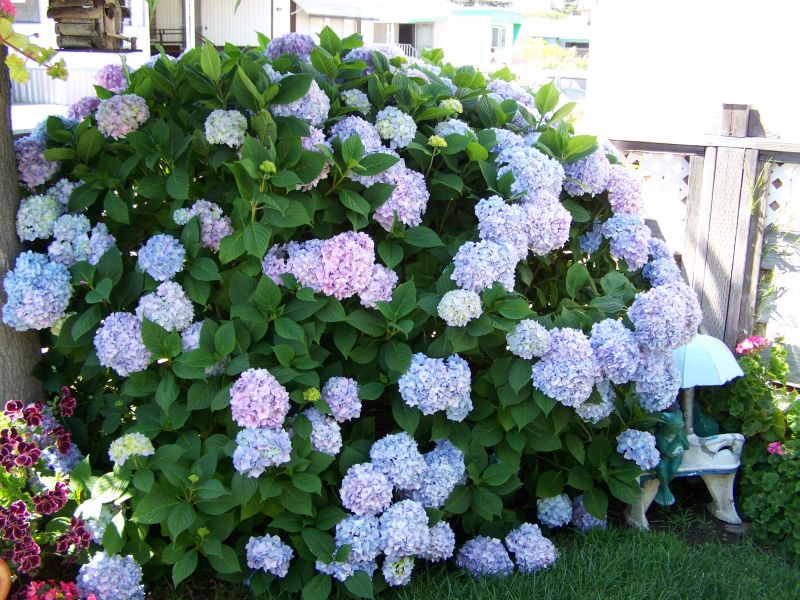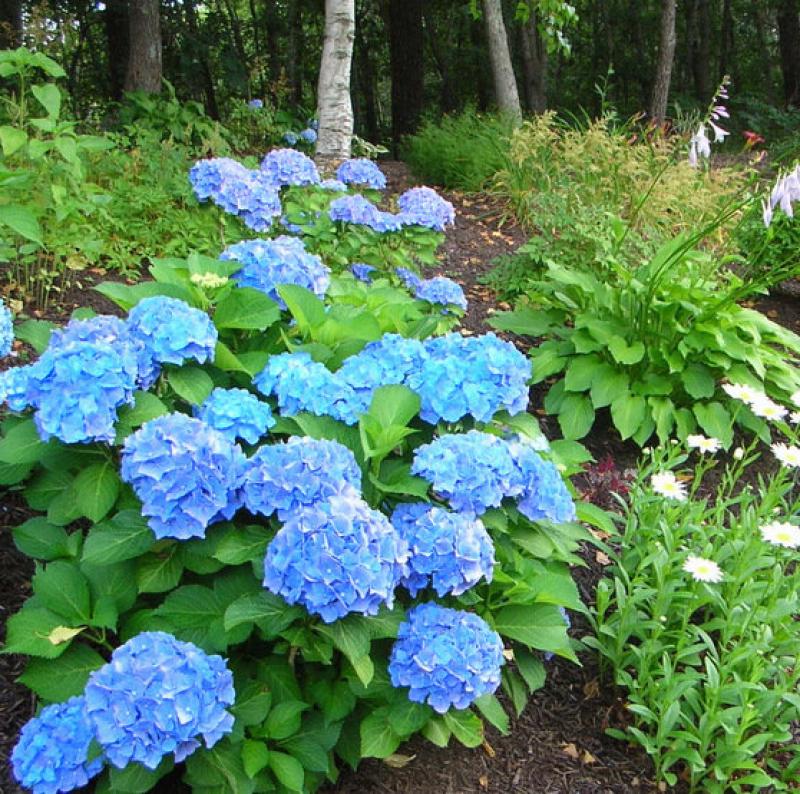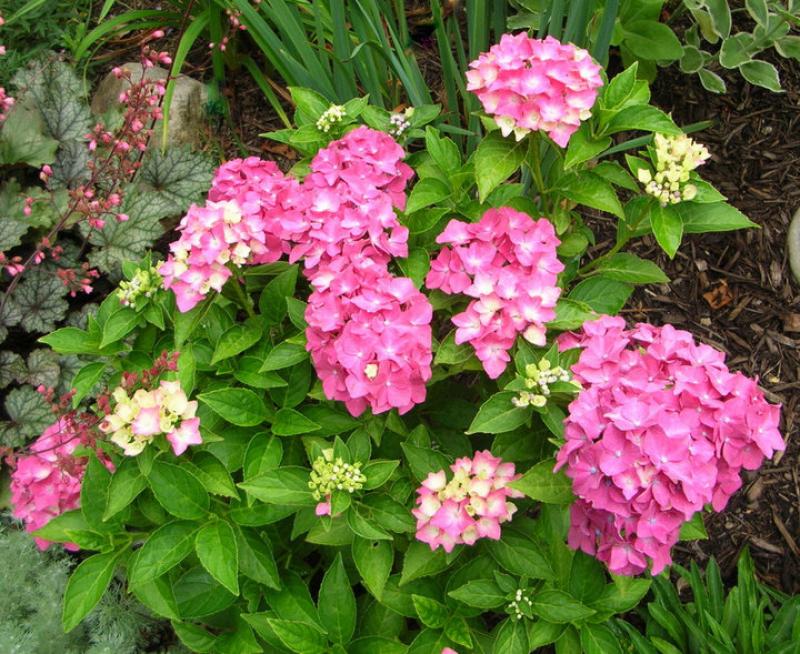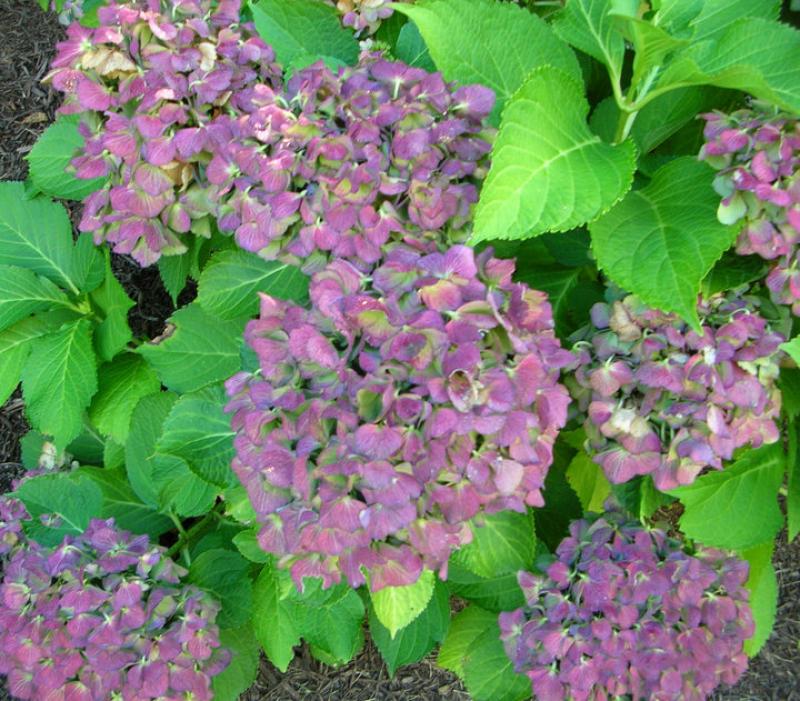(Teriblondeness, California)
Mophead! The French hydrangeas (hydrangea macrophylla), with their large, rounded globes of flowers (mopheads!) in colors ranging from deep blue to lavender, to pure white and pinks and light reds are the ones we recall from our grandmothers garden. Their nostalgic vision of loveliness is captivating during summer months. The soil pH determines their color: the bluest color comes from an acid soil, the reddest in an alkaline soil. If your soil leans toward the alkaline pH, add aluminum sulfate to the soil in winter for the bluest blue; if you want redder blooms, add lime or superphosphate.(Coastal Gardener, Plymouth, MA)
Macrophylla hydrangeas grow easily in rich, porous soil. They will also grow well in clay soils that are not compacted. In warmer climates, they prefer the comfort of shade on hot afternoons. Too much heat and their beautiful flowers will droop sadly, but with the cool of late afternoon, they will again stand at attention, their large, lovely heads swelled to perfection. So, in zones with extremely hot summers, give them the right siteone that gets early morning sun and afternoon shade or partial shade. But keep this in mind: the further north you garden, the more sun these hydrangeas can withstand.(Coastal Gardener, Plymouth, MA)
Lacycaps! Lacecap hydrangeas are of the same family as the mopheads, but they are daintier than their bold cousins. They appear light and airy in clusters above the foliage. Their colors are gentle in contrast to the vivid colors of the mopheads. Youll often see a ring of water-colored flowers surroundingor mixed withsterile flower buds that never open. Quite an interesting composition.(Pamela Zuchowski, Wellsboro, PA)
Pruning Hydrangeas You only need to prune to control the plants growth, or to shape it. Keep in mind that most hydrangeasincluding those in the macrophylla genusbloom on last years wood growth, so DONT PRUNE IN THE SPRING! Doing so will remove hiddenat this timeflower buds, and you wont have any summer blooms. If you want to trim your hydrangea bush, do so soon after the plant flowers. The flowers that you remove during this process will make excellent dried arrangements.(Coastal Gardener, Plymouth, MA)



